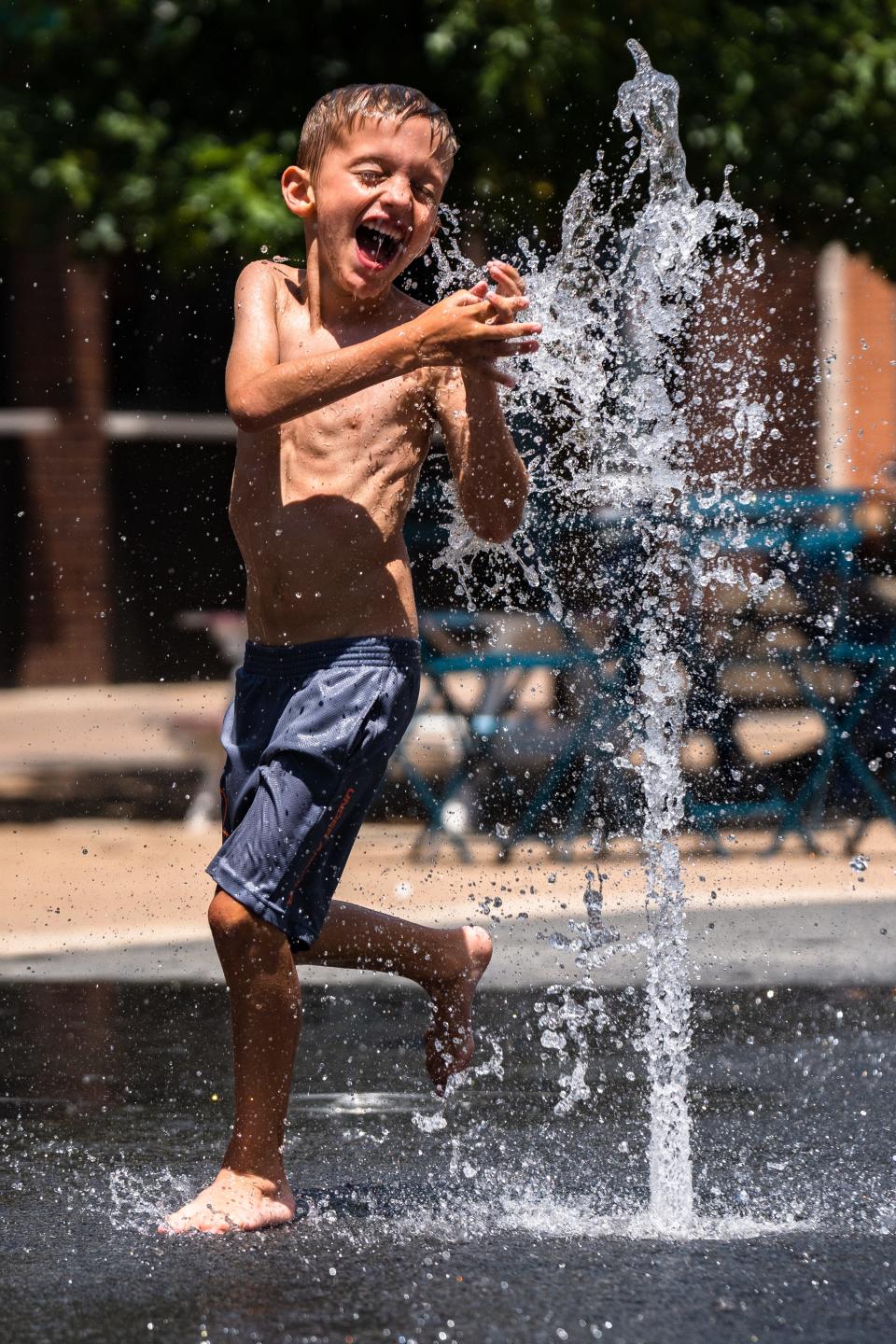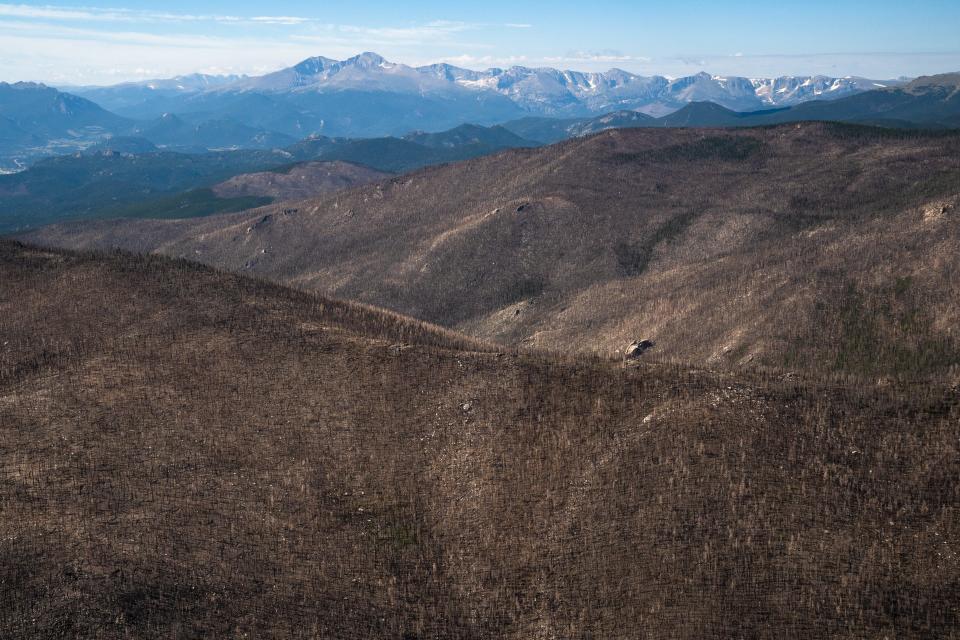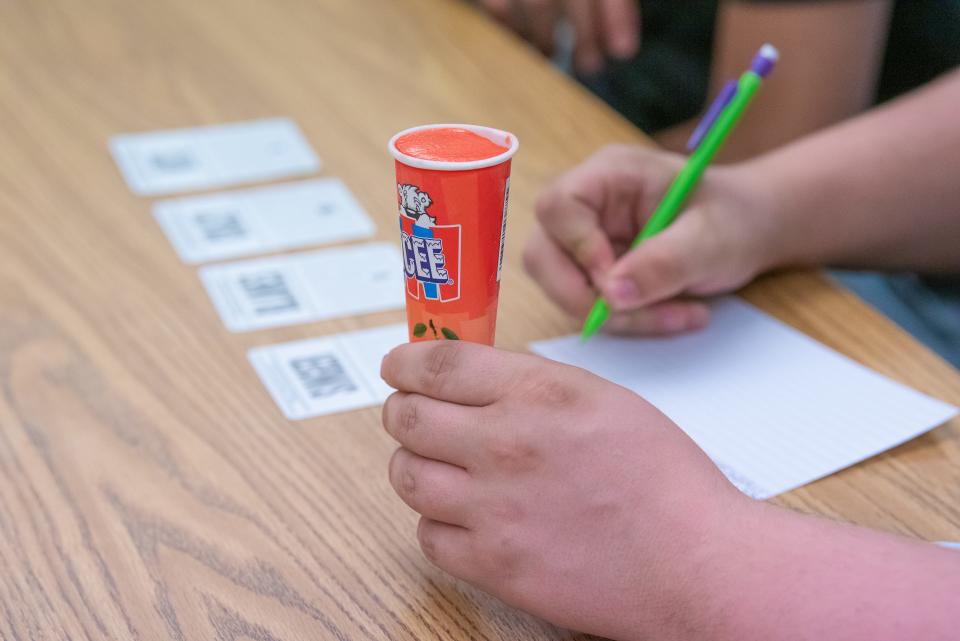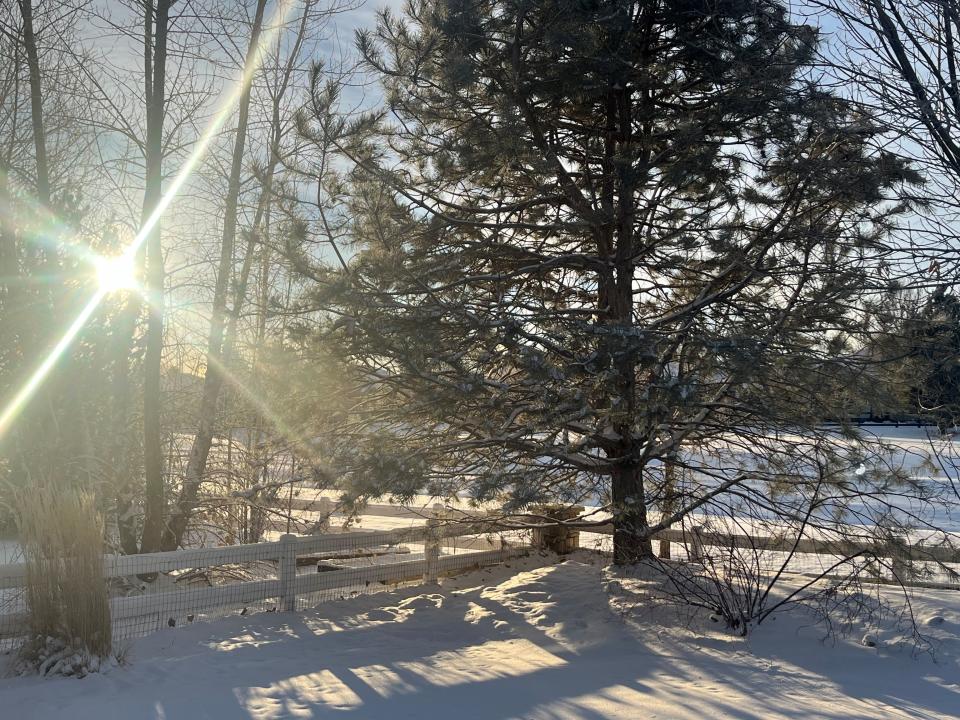From temperatures to wildfire risk, here are takeaways from new Colorado climate report
Temperatures, which have risen an average of 2.3 degrees Fahrenheit statewide since 1980, will continue to increase, and heat waves and droughts will become more frequent and intense. Colorado will also see more frequent and larger wildfires, earlier spring water runoffs and more water loss from soils through evaporation during our agricultural growing season in the next 20-30 years.
Those were some of the key findings of the latest “Climate Change in Colorado” report prepared by researchers at Colorado State University and an outside consultant who had directed two statewide climate reports.
“The key takeaway is that it’s getting warmer, and that’s going to have an impact on our hazards and our extremes that we’re vulnerable to,” said Becky Bolinger, a co-author of the report and Colorado’s assistant state climatologist.
That “observed warming trend in Colorado,” the report reads, “is strongly linked to the overall human influence on climate and recent global warming.”
The third edition of the statewide climate report, published earlier this month by CSU’s Colorado Climate Center and Lukas Climate Research and Consulting, was designed to update reports prepared in 2008 and 2014 by researchers at the University of Colorado-Boulder’s Western Water Assessment program, led by then-professor Jeff Lukas.
The 112-page report analyzes observed data on changes in Colorado’s climate, water, and climate extremes and hazards. Using that data, the report also includes climate projections for the future with varying degrees of confidence.
Researchers expressed “very high confidence” that average temperatures will continue to increase, that heat waves will become more frequent and intense, and that evaporative demand, speeding up the evaporation of water from plant surfaces, soil and surface water, will increase.

The researchers expressed “high confidence” that droughts will become more frequent and intense, that the state will see more and larger wildfires, and that annual spring water runoff will continue to occur earlier in the year.
There was no consensus on the impact the overall warming would have on annual precipitation, which varies significantly across the state, the report found. And the number of cold spells in both days and duration, although decreasing, are doing so at a much slower rate than the increase in hot days and heat waves, said co-author Russ Schumacher, the state climatologist and a professor of atmospheric science at CSU.
More: If you thought Fort Collins' warm December was odd, you're right. Here's how weird it was.
Overall, the findings “can be a little depressing,” Bolinger said.
“But my hope is that we’re arming ourselves with information, and when you have information, you can better prepare yourselves. The whole point of the state wanting these updated studies is to help other state agencies and local governments use this information and use it in their planning ... so that we can better prepare for some of these events that are inevitably going to occur.”
How was the report created?
The report was authored by Bolinger, Schumacher, Lukas and Peter Goble of the Colorado Climate Center. It underwent extensive peer review from academics and researchers in Colorado and other states, as well as regional and national experts.
The goal, Schumacher said, was to provide a meaningful update to the 2014 report, adding in another decade of data, while also increasing the accessibility of the climate data and projections.
“It’s a resource; it’s reference material,” Schumacher said. “We get asked questions about these kinds of things all the time, and sometimes that just means pulling together whatever data’s available to answer the question that comes up. Now, we have a lot of that information in one place.”
The report was funded by the Colorado Water Conservation Board, which also funded the two previous statewide climate studies, and Denver Water.
“So, there’s certainly a focus on water,” Schumacher said, “but we tried to broaden it out a little bit more than that, so that it’s not just about water; that we touch on other hazards and that it can serve as a reference to see where we are right now and where we’re likely to go in the future.”
What can I learn about wildfires in the report?

Wildfire wasn’t really discussed in the earlier reports, Bolinger said. Given the size and scope of the Cameron Peak and East Troublesome fires in 2020, the two largest wildfires ever recorded in the state, and the loss of more than 1,000 homes in and around Louisville and Superior in the 2021 Marshall Fire, it is now an extreme climate-related hazard that can’t be ignored.
“It’s closely tied to drought and our warming climate,” Bolinger said. “We’re seeing the most significant warming in the fall, and with the recent dry pattern that we’ve been in over the past 20 years, with that fall warming, I think that really provided the ingredients for that type of event.”
“Rising temperatures are a major driver” of the increased frequency and size of wildfires, the report reads.
How much have statewide temperatures increased?
The annual average temperature has risen an average of 2.3 degrees statewide since 1980.
Statewide temperatures in the fall have increased an average of 3.1 degrees since 1980, the report found. That warming has been even more significant in southwestern and south-central Colorado, where drought conditions have been more frequent and severe.
The warmest year in the 128 years of state record-keeping occurred in 2012 with an average temperature of 48.3 degrees, which was 3.2 degrees higher than the average from 1971-2000, the report found. And only once since 2001 has the average temperature in the state dipped below that 1971-2000 average of 45.1 degrees.
Because the report was prepared in 2023, data from that year was incomplete and not included, Schumacher said.
Although variations in the magnitude of warming, precipitation, snowpack, spring runoff and evaporation existed across each of the 11 geographical subsections of the state researchers analyzed, the overall trends they expressed “very high” and “high” levels of confidence in were the same.
More: Super El Niño forecast for winter; past versions produced big Fort Collins snow totals
“Further and significant warming is expected in all part of Colorado, in all seasons, over the next several decades,” the report reads.
How much warmer are temperatures expected to get, and how might that impact precipitation?

Average temperatures across the state are projected to warm another 1-4 degrees from what they were in 2022 by 2050, assuming a medium-low scenario in carbon emissions, and 1.5-5 degrees by 2070, the report projected. Warming is projected to be more significant in the summer and fall than in the winter and spring.
Cold spells with sub-zero temperatures, heavy snowfall events and storms with intense rainfall causing localized flooding aren’t going to go away, though, the report found.
In fact, there was no consensus among the researchers about the impact the observed warming is having on annual snowfall and precipitation across the state.
The consensus of climate models suggests the northernmost U.S. states and Canada will see higher annual precipitation in the future, while the far southwestern United States and Mexico will see decreased annual precipitation. Since Colorado is in the transition of these two climate zones, the northern part of the state is likely to have increased precipitation while the southern part is likely to have less, which makes overall impact on the state uncertain, the report found.
The increased frequency and duration of droughts and reduced streamflow projected in the report found those conditions would exist even with no change in snowfall and precipitation because of the increased rates of evaporation from plants, soil and surface water that are caused by rising temperatures.
Streamflow in all of Colorado’s major river basins, the report found, has been 3% to 19% lower than the 1951-2000 average. Most climate model projections show reductions of 5% to 30% from the 1971-2000 average by 2050. Summer and fall streamflows are projected to decline significantly by 2050, with seasonal peak runoff shifting 1-4 weeks earlier, due to warming.
Although average temperatures in Colorado could rise to match those of New Mexico and Arizona by 2050, as several previous reports have suggested, our climate won’t match what is now found in those states, Bolinger said. Our elevation, proximity to the mountains and latitude — which puts us closer to jet stream winds that carry storms from west to east across the country and arctic air masses dropping down from Canada — aren’t going to change.
“We have a very different geography, and we’re not changing our geography even if we’re warming our temperatures,” she said. “So, the idea that we’re going to be more like Albuquerque? No, we actually look very different. …
“Winter storms are still going to be an issue, and cold snaps are still going to be an issue; they’re not going away. Just based on where we live, we experience winter, and that’s going to continue. But on the flip side, when you warm that average a little bit, you’re tilting the odds in favor of more of those warm extremes happening compared to the cold extremes.”
What are other takeaways from the report?
The chapter on climate extremes and hazards includes detailed observations and analysis to support the very high and high levels of confidence researchers have in the increased frequency and intensity of heat waves and droughts and the likelihood of more and larger wildfires.
But it also includes analyses and projections of several other extreme events and hazards.
Researchers expressed “medium” confidence in projections of fewer cold waves, more frequent flooding and greater levels of dust on snow, which impact snowmelt, evaporation and runoff. They expressed low confidence or were unable to make any significant projections concerning windstorms, strong thunderstorms, hail, tornadoes and winter storms.

Significant efforts are being made to reduce greenhouse emissions and mitigate the worldwide warming trend, Bolinger said. That’s why the report included projections based on varying future levels of emissions of the carbon monoxide and methane that are contributing to the warming of the earth’s atmosphere.
It doesn’t make the climate report itself, though, any less significant.
“We’re talking about the climate is already changing,” she said. “How are we going to prepare for these events? The goal of this is: Here’s the information; use this information to prepare for events, so we’re not as caught off guard as we’ve been with, say for example, the Marshall Fire. To know that we’ve got some of this information. Plug it in and use it, so we’re better prepared.”
Reporter Kelly Lyell covers education, breaking news, some sports and other topics of interest for the Coloradoan. Contact him at kellylyell@coloradoan.com, twitter.com/KellyLyell or facebook.com/KellyLyell.news.
This article originally appeared on Fort Collins Coloradoan: How will climate change impact Colorado? Here are projections

